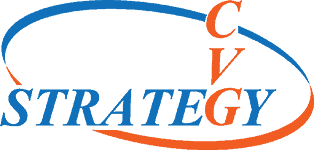
What is Continuous Improvement?
Continuous Improvement and Organizational Development are valuable tools in a Quality Management System (QMS). For improvement to occur it is essential that each important process in an organization be identified and analyzed. Once identified and documented, these processes can be regularly reviewed to access effectiveness by applying improvement based on metrics.
It is important to realize that everything that happens in a business is a process and should be evaluated for inclusion into a QMS. This is because there are no activities that can not be made more effective. The benefits of this effectiveness can include increased product quality, enhanced customer satisfaction, reduction of costs, and employee satisfaction.
Types of Continuous Improvement
Basically, there are two types of continuous improvement, incremental and breakthrough. Big steps can be more costly and involve a greater risk. Therefore, they are often reserved for cases where radical change is required. Incremental improvement is taken in small steps and can be easily assessed for effectiveness, thereby allowing for more immediate adjustment of changes.
Establishing Paths for Feedback
Organizational feedback is very similar to feedback in mechanical systems. The famous Scottish inventor James Watt pioneered early feedback mechanisms in the 1700’s. One of his most important inventions was the centrifugal governor.
This mechanism automatically regulated the speed of a steam engine by supplying continuous feedback to a controller. This mechanism paved the way for industrial automation and increased safety by removing the need for human intervention in a continuous process.
In a business setting, every stakeholder in a process is a source of feedback. For effective use of the feedback all pertinent information must be assessed. It must then be filtered in such a way as to remove statistical noise and then intelligently applied to inputs. When applied, outputs can (results) be monitored as feedback to supply a control system into the process to provide continuous improvement.

Using Metrics as Feedback
Businesses today exist in a metrics rich environment. A wealth of data is available for sales, costs, defective product, customer satisfaction, and employee process suggestions. Looking into all data available in a process on a regular basis can provide more granular and intelligent findings. These findings can be used to identify trends and point out potential issues before they become critical.
This is important because variances in business performance can occur for any number of reasons. Understanding how all processes are affected by change can provide dynamic responses for continuous improvement and provide a smoother overall performance.
A methodology for defining objectives relative to a quality management system is SMART objectives. These goals are parametric and as such provide tractability and structure to elements that might otherwise be dealt with subjectively. The elements of the SMART approach are:
- S – Specific
- M – Measurable
- A – Achievable
- R – Relevant
- T – Time Based
Cashing in on Opportunities
When establishing objectives, every challenge is an opportunity to achieve excellence. Organizations that strive for continuous improvement will perform more efficiently and remain competitive. This improvement can be made more viable and measurable if objectives are clearly researched and defined.
To adequately research causes and effective corrective measures it is important to engage an organization at all levels because front-line workers can often provide a more granular perspective than an organization’s managers and senior leaders. By affording all team members the opportunity to provide feedback, an organization can nurture a culture of continuous improvement that will provide results.
After initial analysis, opportunities for improvement can be identified. Stakeholders, work groups, and team members should be involved to seek ways of implementing those opportunities.
This provides feedback from those most involved in the processes and engenders involvement and empowerment in the process improvement methodology. As a result, each individual feels like they made the process better. This buy in greatly helps with adoption to process changes which can often present a challenge to businesses.
Types of Quality Management Systems
There are a large number of QMS that have been adapted to the needs of specific business sectors or business requirements. Most are based on ISO 9001: 2015 which utilizes quality processes to meet customer needs. Organizations that implement ISO 9001 Quality Management Systems (QMS) for their products and services have experienced improvement through improved customer satisfaction, staff motivation and continual improvement.
Other quality systems include:
AS9100 Quality Management Systems – Requirements for Aviation, Space, and Defense Organizations
AS9100 is a quality management system specifically developed for the aerospace industry. The standard was created in 1999. Since then, it has been widely adopted by manufactures and suppliers in the industry. It was written by the Society of Automotive Engineers and the European Association of Aerospace Industries.
ISO 13485 2016 Medical Devices
ISO 13485 provides a quality management system for organizations involved with medical devices at any stage of that equipment’s life cycle. It includes those organizations supplying materials, sub-assemblies, and components for those devices as well as those that are involved with design, distribution, installation, calibration, service, and decommissioning of medical devices.
ISO 27001 Information Security Management Systems
ISO 27001 (ISO/IEC 27001) helps organizations treat data security seriously and confidently. It is implemented through documented systems and processes that are designed to guard against the risk of security breaches or misuse of data while ensuring compliance to legal requirements. The ISO 27001 2013 (Information and Data Security) standard is used as a basis for an ISMS (Information Security Management Systems).
CVG Strategy Quality Management Expertise
Our Exemplar Global Lead Auditor Consultants can help you develop an effective Quality Management Internal Auditing team to perform first-party audits within your organization. We can also help you implement a new quality program, provide training, and perform second party audits to ensure that your organization complies with contractual requirements.
Our quality strategy allows clients new to Quality Management Systems to rapidly implement a tailored system, because everything we do as consultants is processed based. Our Quality Experts have experience with ISO 9001:2015, AS9100D, ISO 13485:2016, ISO IEC 27001:2022 and Association of American Railroads (AAR) M-1003 and can readily deliver compliant procedures and work instructions.
As consultants, our focus is to help you improve your business by identifying continuous Improvement and organizational development opportunities for growth and mapping a realistic road to success. We tailor each process improvement project to meet your specific requirements. We can focus on process mapping, improving existing processes, or help you establish or write new business plans for your company.
CVG Strategy is a consultancy offering coaching, mentoring, training and program development focused on areas including Business Process Improvement, ITAR and Export Compliance, Cyber Security and Product Test and Evaluation.


